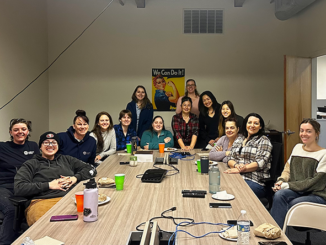
By / Meredith Low
We prefer to have serious decision-making discussions in person. Challenging conversations are easier when we can read body language or even hear intakes of breath. We want to look into other people’s eyes when we are making a commitment together. Now more and more organizations are being forced to make serious decisions both at a distance and at breakneck speed, with high stakes and seriously limited information. It’s no longer an option to defer difficult conversations to in-person meetings.
It’s not (just) about the tech
Do you need to set up the tech so it’s an enabler and not an impediment? Sure, you do.
But then you need to think about how you are going to make decisions, which decisions you’re going to ask different groups to make, and why. And then proceed working with the tech—and the group of decision-makers—you’ve got.
How to structure the discussion
It’s absolutely crucial to set clear expectations about what a given discussion is about—and what it’s not. Remember that in a time of stress and ambiguity, putting parameters around the conversation can come as a relief. Help people understand what they are being asked to weigh in on, how, and why. Kick some cans down the road, absolutely, but be explicit about it.
- Frame the decision – State the decision you are asking for in a single sentence or phrase.
- Outline the stakes – Why is this decision needed, and what happens if there is no decision?
- Clarify roles – why is this group or individual being asked to make this decision?
- Decide what information or inputs are needed to make that decision.
- Put the decision in context – Once this decision is made, what happens next?
Presenting options
Presenting options for decisions, consider what options to (and not to) present; what criteria to use to analyze the options; and risks and potential mitigations for each.
To maximize your success, give people a deck, rather than expecting them to follow along verbally, and ask people to reflect on the questions they should be prepared to answer
Having a good conversation
For the discussion, provide technical support—ideally the person responsible for the decision-making process isn’t also on IT support—and ensure there is solid leadership for the discussion. Leaders should remember to allow people space and time to think, including silence. If someone’s role suggests you need their input, go ahead and call on them by name. Be clear when you’re moving to decision-making, and when you need affirmative consent – “I’m asking for a clear yes from everyone here.”
Decisions can be imperfect
No one can be held accountable for making perfect decisions, but organizations are accountable for having a justifiable and appropriate process. That doesn’t mean slow decision-making in a fast-moving environment. It does mean taking a beat, making your thinking explicit, and applying critical thinking.
Meredith Low, BA, MBA, CAE, C. Dir., is the founder and Principal of Meredith Low Consulting. She loves working with not-for-profit organizations, because of the uniquely complex role they play in society. Her career spans engagements with professional associations and other not-for-profits, small to large companies (including the Fortune 500), and government. This article is an abridged version of her blog entry, “Decision making, but make it virtual”. Read the full text at meredithlow.com



